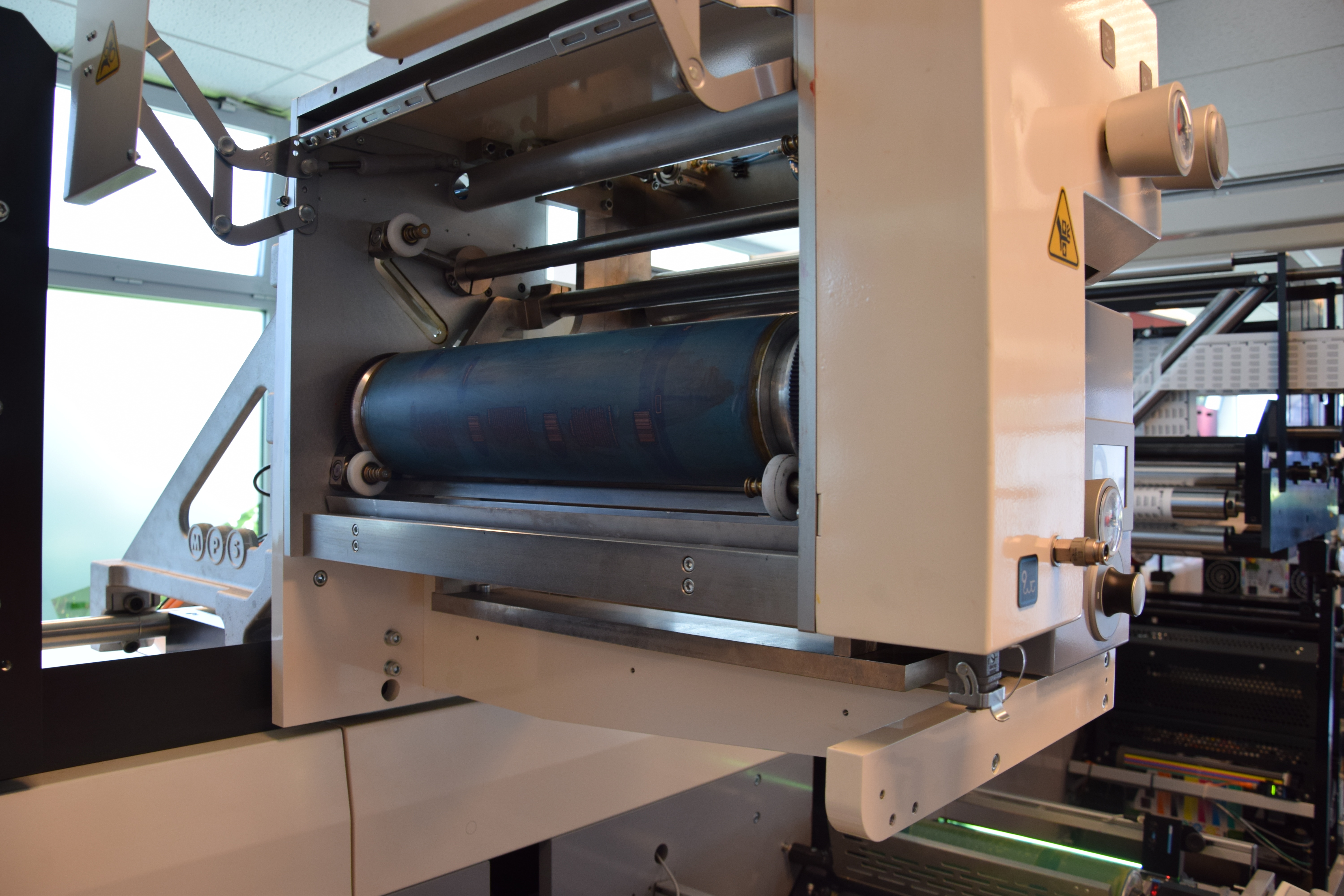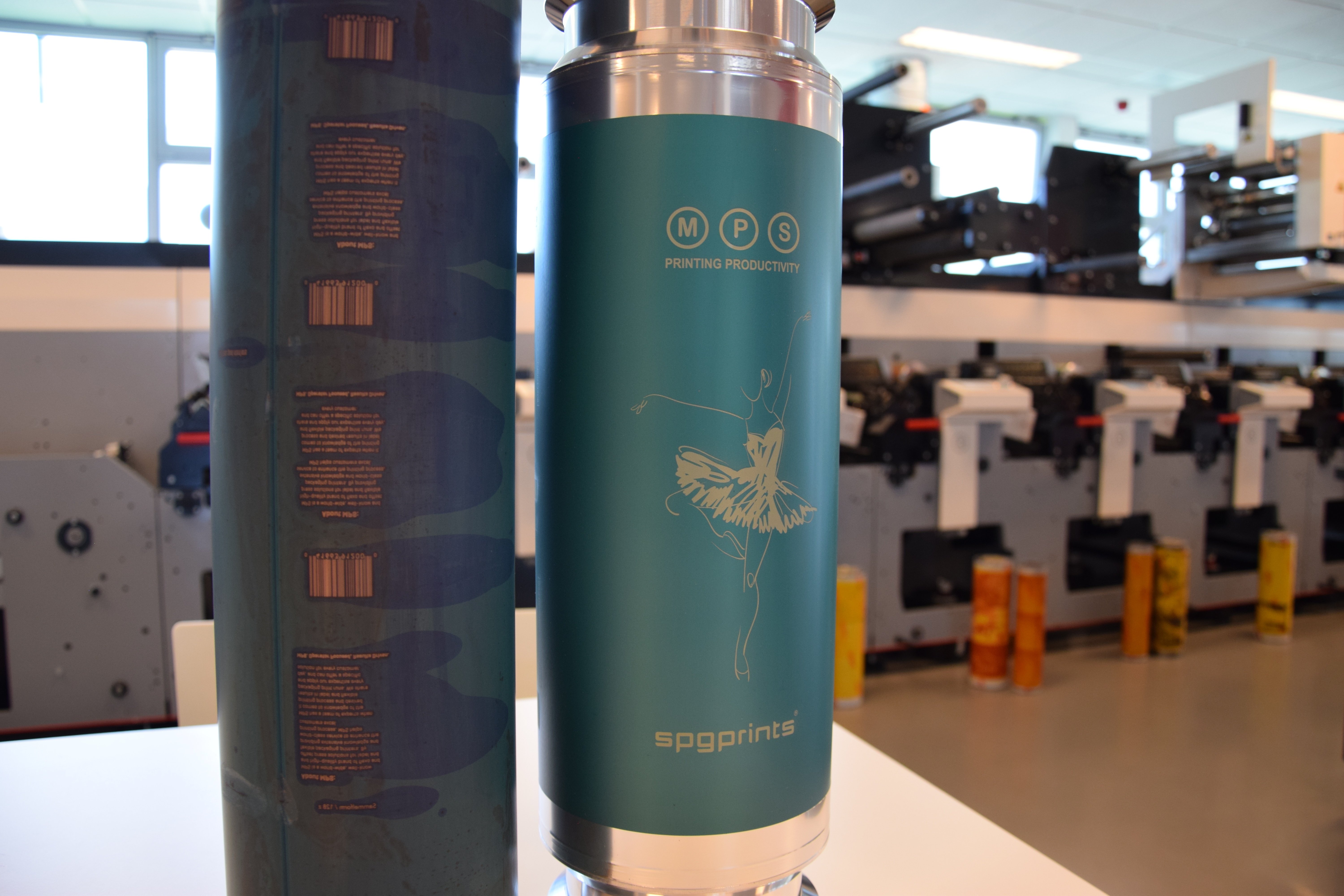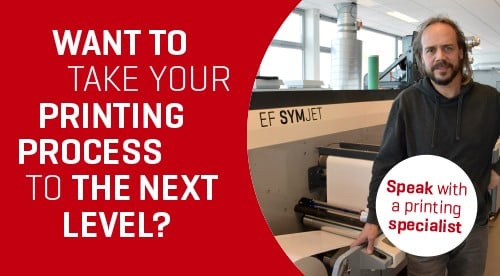How do you retain your place in a highly competitive market? That’s a question those involved in the label printing industry often ask themselves. Other than short lead times and the lowest cost price per 1000 labels, high-quality image is everything. To stand out from your competitors, you want to be able to print custom-made labels and bring them to another level. Screen printing, or silk screen label printing, can be the answer. In this blog, I will tell you why — and how you can apply this printing technique on a flexo press.
What is silk screen label printing?
Silk screening is an old, yet very versatile, printing technique. It offers a range of graphic advantages, over other printing methods. Screen printing can lay down very thick ink deposits on almost any surface; plastic, metal, paper, wood, fabric etc. Screen-printed labels can be recognized by their thick, raised layer of ink.

A silk screen is used to transfer ink onto a substrate. The silk screen contains the image being printed. A doctor blade will move across the silk screen pushing the ink through the image on the substrate underneath.
Screen printing enables rapid, reliable and economical production of the ‘non-label look’. Some examples of effects that can be accomplished using screen printing:
- Metallic colours
- Strong opaques
- Tactile warning symbols
- Special varnishes
- Scratch-off inks
These specific effects are based on larger ink lay down requirements or a combination of ink lay down and ink partial size.
The advantages of screen printing in the label printing industry
Screen printing has several advantages:
- Versatility: What will make your labels stand out from its competitors? Is it a custom silk screening? It’s hard to find a printing method that’s more versatile than screen printing; the applications are almost endless. To name a few: black light ink, glow in the dark ink, mirrored ink, scratch-off ink etc.
- High-quality and long-lasting: Due to the composition and thickness of inks used in screen printing, this method can withstand far more stress than others without losing the quality of the print. That’s a plus as certain labels don’t hold up well if they are required to withstand the outside elements, humidity or moisture.
- Unique shaped products: Silk screens are created for each order and color, which means they can be custom made for any size, no matter how challenging.

Drop-in or a rail unit: this is how you apply screen printing on a flexo press
Silk screen offers you a wide range of printing possibilities on top of your flexo printing process. It can be a way to stand out from your competitors. But how can you apply it to a flexo press in a flexible way? There are two options:
- A screen printing drop-in unit: a unit which is installed in the flexo press print station
- A screen printing unit on the rail: a unit that’s placed on the rail on top of the press and that can be moved to the desired print position
Each option has its pros and cons. A drop-in unit requires more set-up time but the unit can be applied to more than one press.
A rail unit can only be applied to one press, but it can be placed along the entire length of the flexo press, shifting it to another print station. This flexibility makes it easy for operators to put the unit in the right position when a job changes.
Adding screen printing to your printing process is a way to offer your customers a wider range of product possibilities. But there’s a lot more you can do to create a future-proof printing process. To name a few: printing automation, real-time insights and regular training for your operators.
If you’d like to know more about screen printing on a flexo press or other printing techniques, feel free to contact me or one of our other specialists, we’d be happy to give you some unbinding advice!
